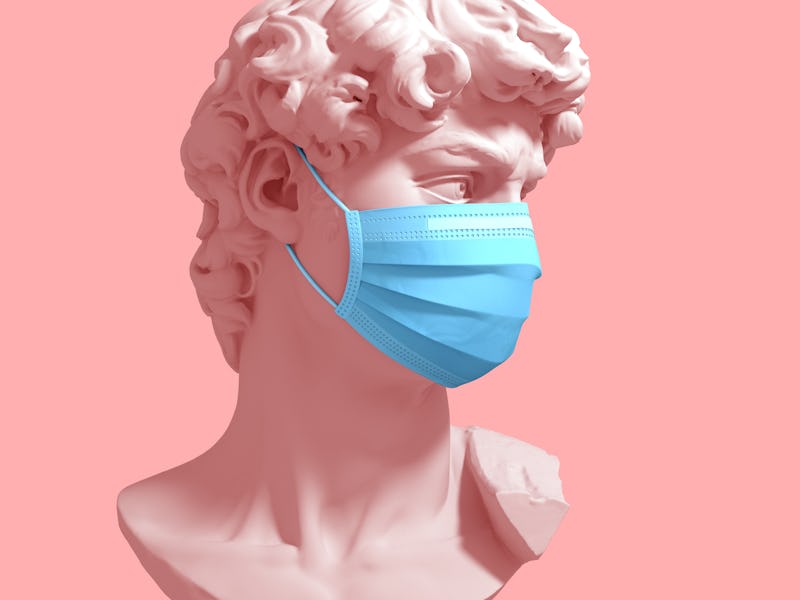3 tricks for communicating clearly behind a mask
Humans are social animals, but how can you connect when you're behind a mask?

Although there was some initial confusion, one thing has become clear six months into the Covid-19 pandemic: wearing masks helps limit viral transmission.
Surgical masks, face coverings, N95s, and bandanas — the mainstays of clinics or camping trips — are now cemented into our daily 2020 looks. But how, exactly, can you communicate when half your face is obscured?
Inverse consulted David Matsumoto, a social psychologist who studies body language, facial microexpressions, and emotions, to find out. Matsumoto is director of the Culture and Emotion research lab at San Francisco State University and director of Humintell, a company that trains people to better interpret nonverbal communication.
Matsumoto stresses that a massive amount of human communication — up to 95 percent — is nonverbal. In a conversation, especially when verbal and nonverbal messages conflict, people rely on subtle eyebrow raises, slight downturns of the mouth, or flitting eye contact to read a situation.
Because face coverings disrupt these key touchpoints, people can use other strategies to compensate, including:
- Articulate loudly and clearly
- Focus on eye contact
- Use body language and gestures
These tricks work a lot better than squinting in other people's direction, hoping they know you're smiling.
Behind the mask — Across cultures and backgrounds, humans exhibit universal facial expressions pertaining to seven emotions: anger, contempt, disgust, fear, joy, sadness, and surprise.
Universal facial expressions for seven core emotions.
Masks can hide up to 50 percent of these vital facial cues. Still, Matsumoto explains that there's still a lot of information left to pick up. People can tell if someone is scared or surprised based on how their eyelids lift and if they're sad or distressed when the corners of their eyebrows go up. They can interpret whether someone is smiling based on how their eyes crinkle, or if one feels disgusted by how their brows and upper face wrinkle.
Critically, masks can also muffle sound, making it difficult to hear others (especially when you're six feet or further apart or hard of hearing). To compensate, people need to speak loudly, clearly, and may need to repeat themselves, or use gestures like thumbs-ups, head shakes, peace signs, or pointing.
"Because voices are muffled, there's a greater chance of misunderstanding from not hearing clearly what was said," Matsumoto explains. "So be really clear orally, use your gestures, and have a greater use of your tone of voice."
The trick, Matsumoto says, is to not overthink it. If someone has a warm, happy demeanor, people are going to notice — regardless if they're wearing a mask, he says.
And importantly, even though it may be slightly more difficult, it's crucial not to cut off communication channels or close off from strangers. Humans are social animals, and research shows connecting with others increases happiness.
Ultimately, in a world with masks on, we have to simply say what we actually mean. Luckily, practicing clear verbal communication will benefit us now and long after the masks come off.
And if you're getting frustrated by any mask-related missed signals in conversation, try a face shield.
This article was originally published on